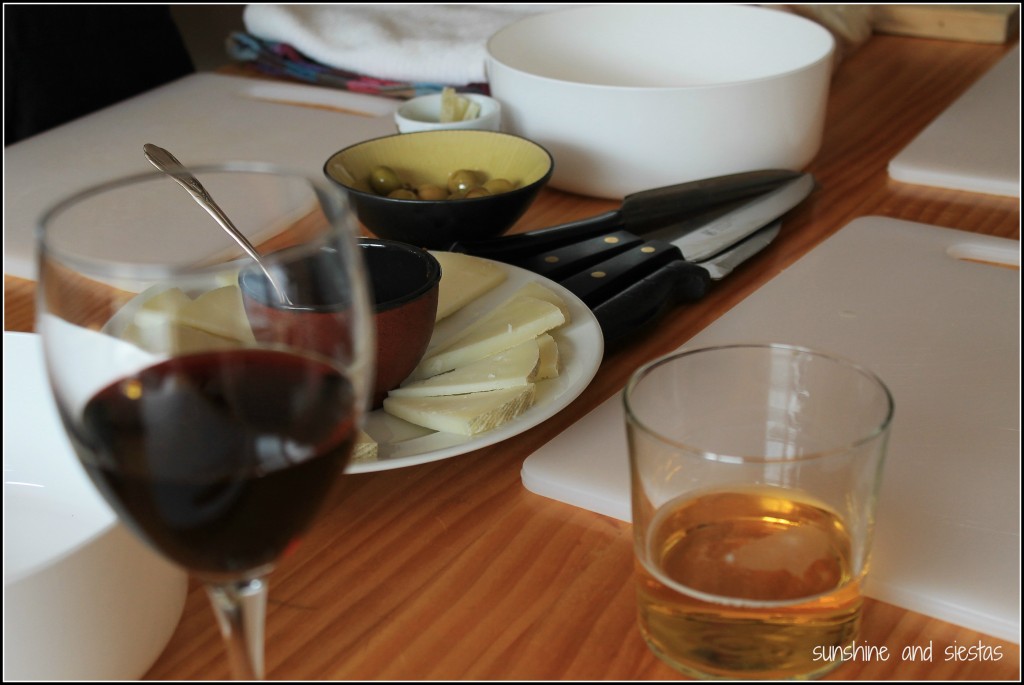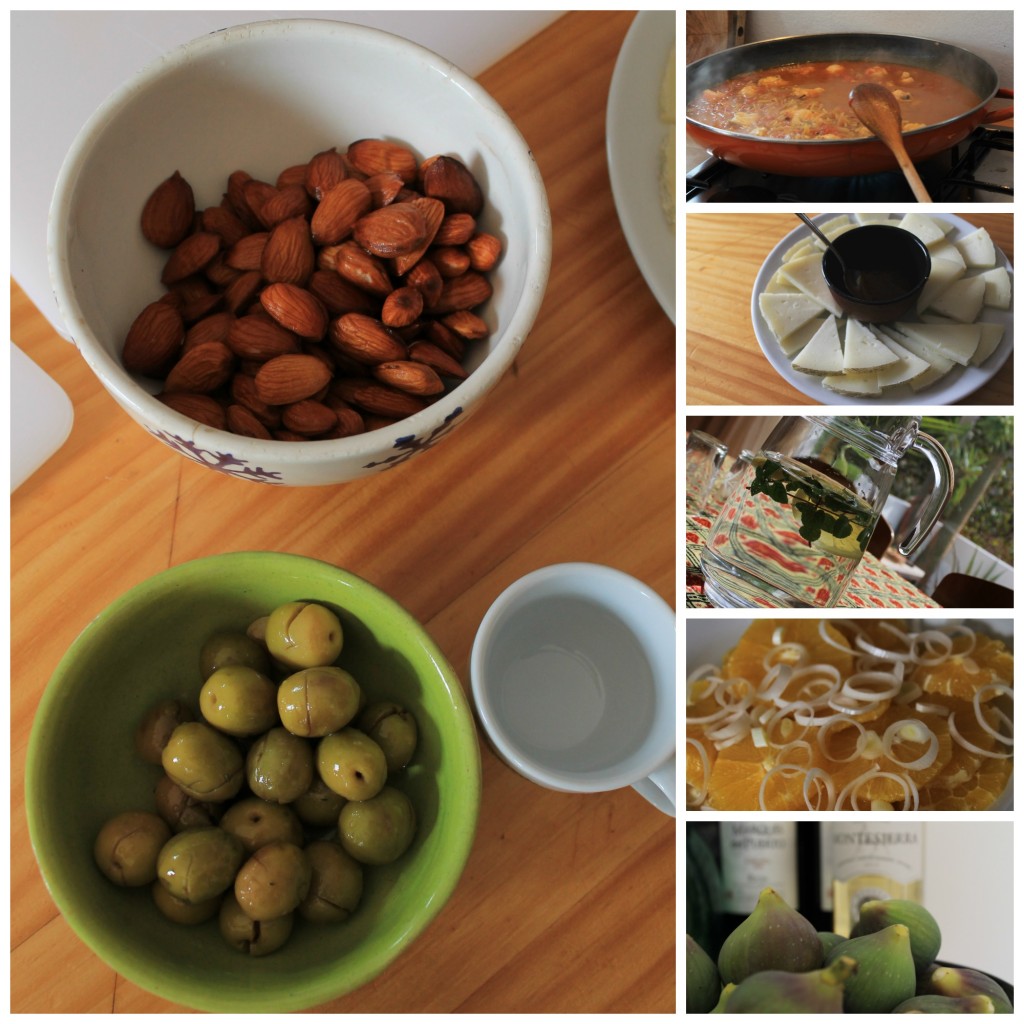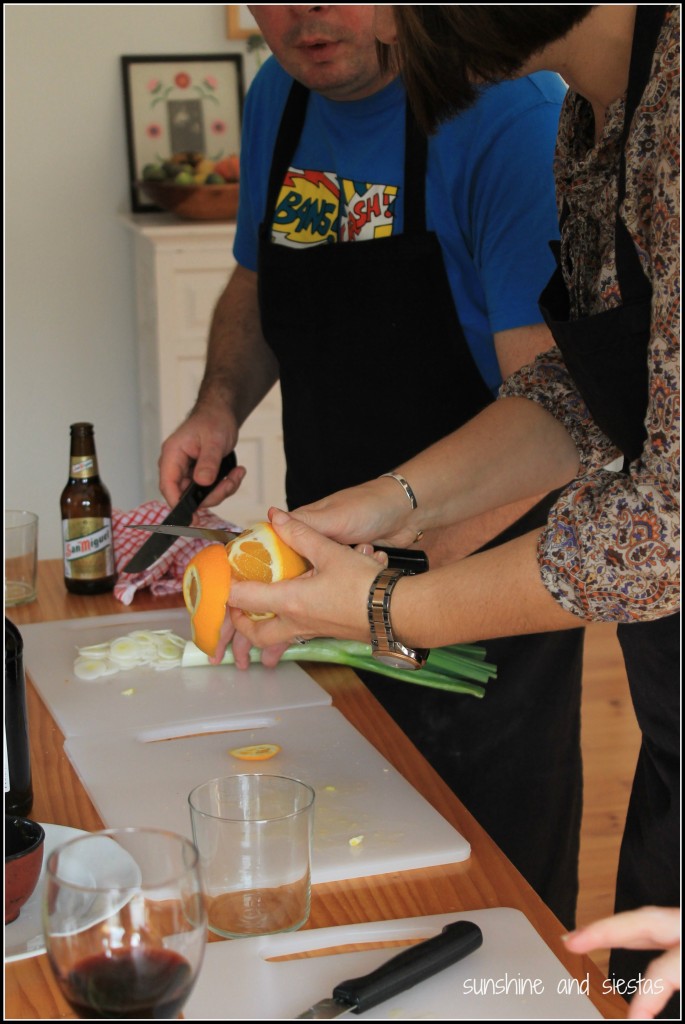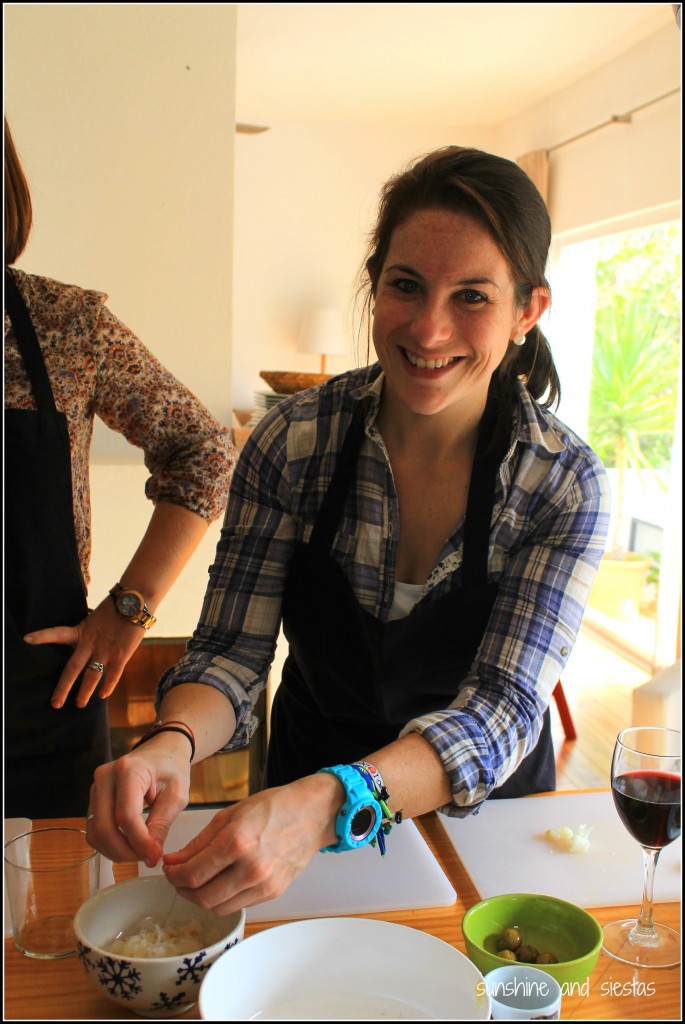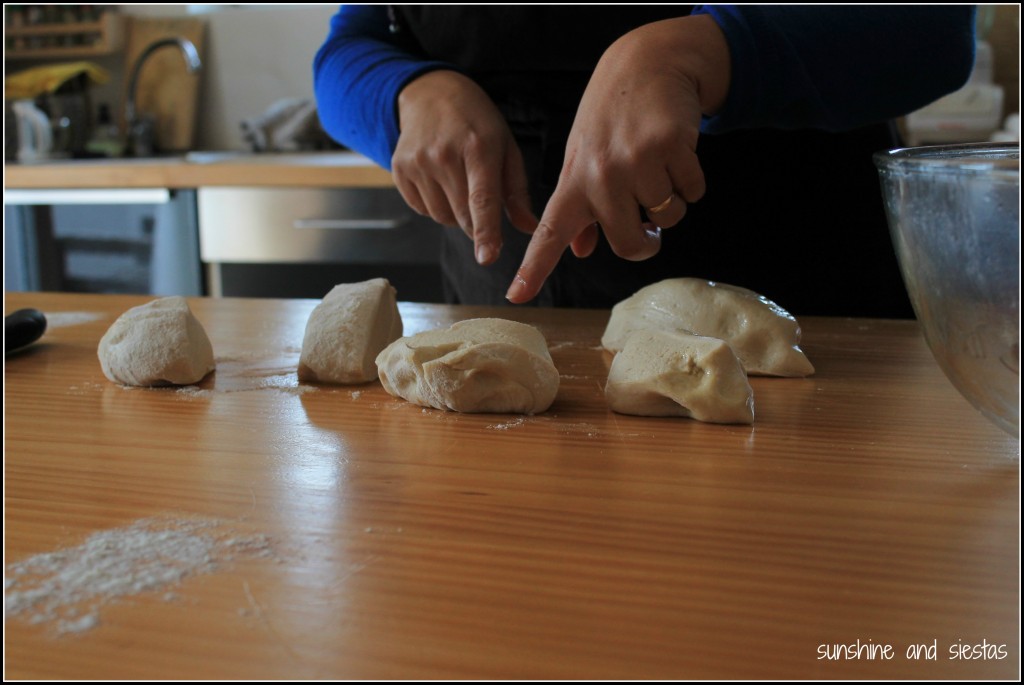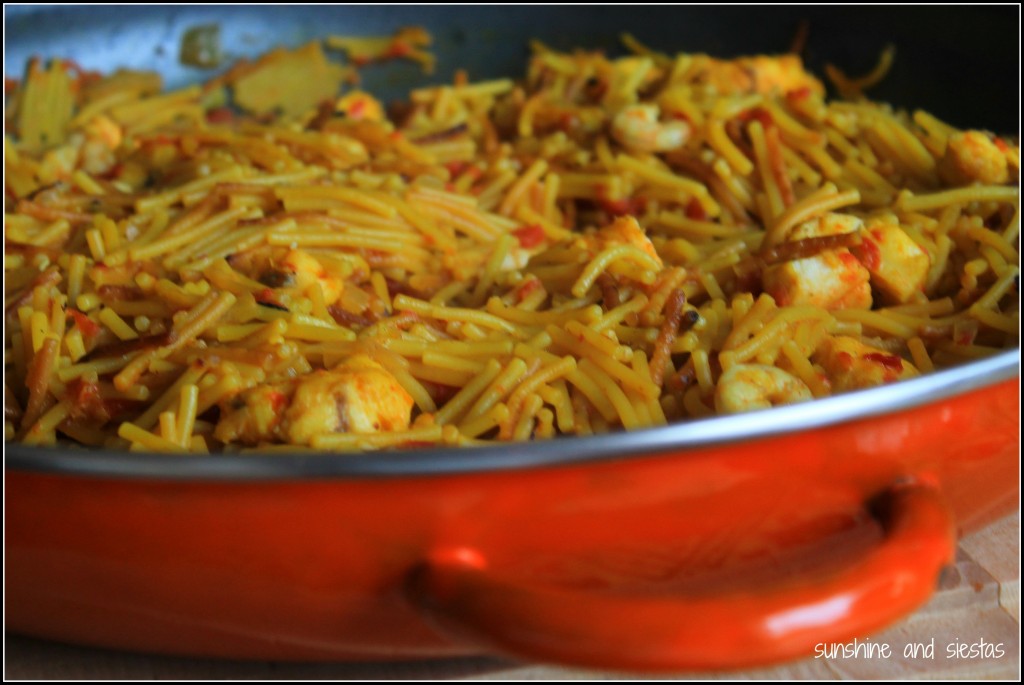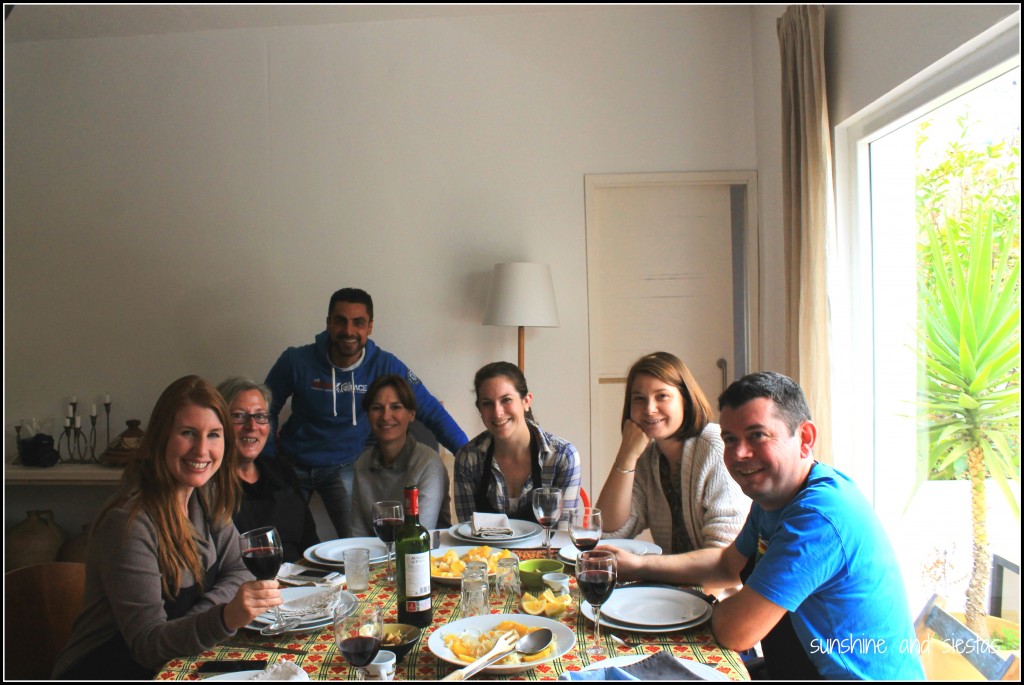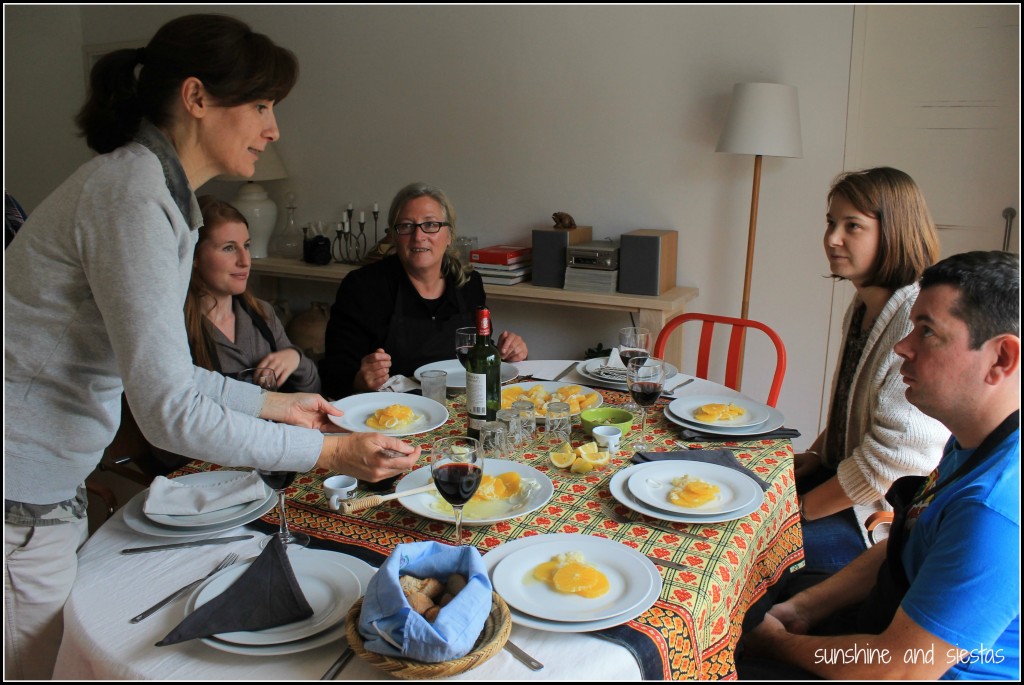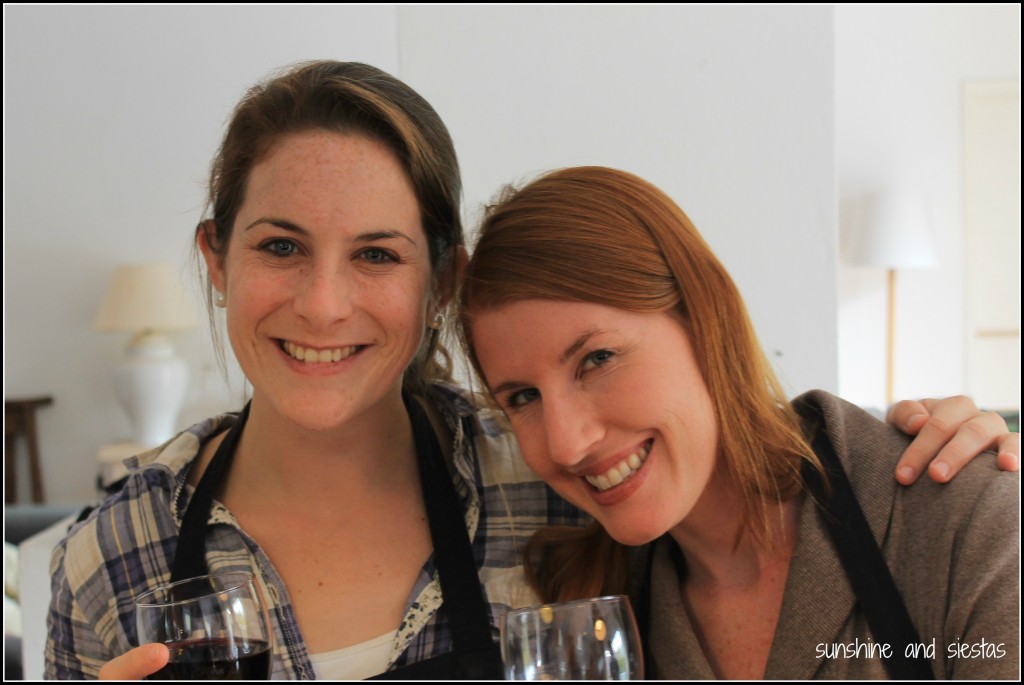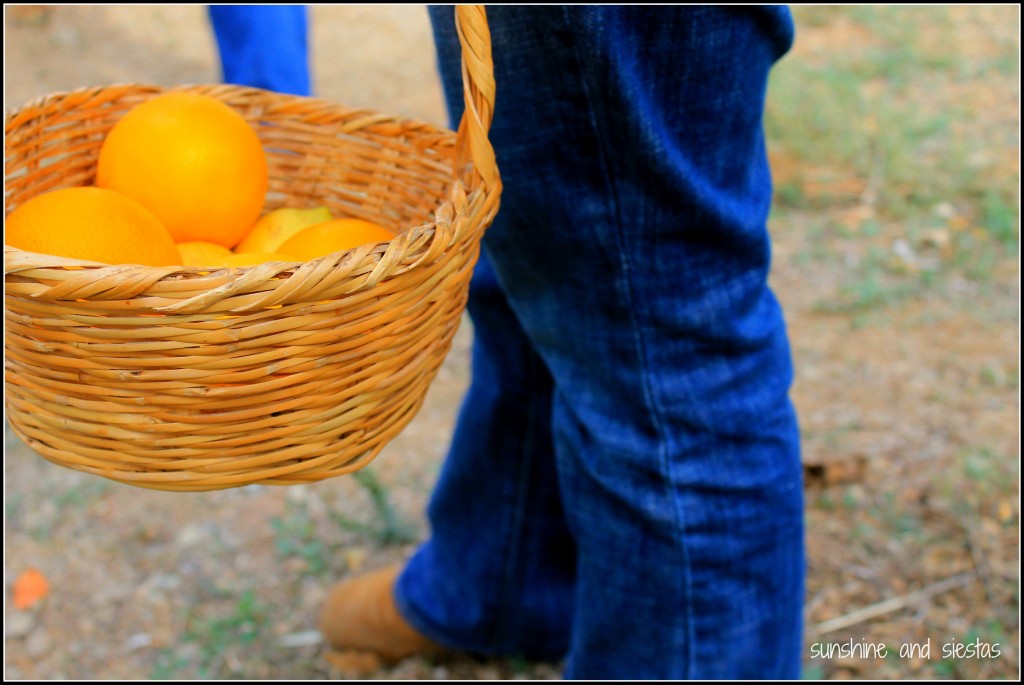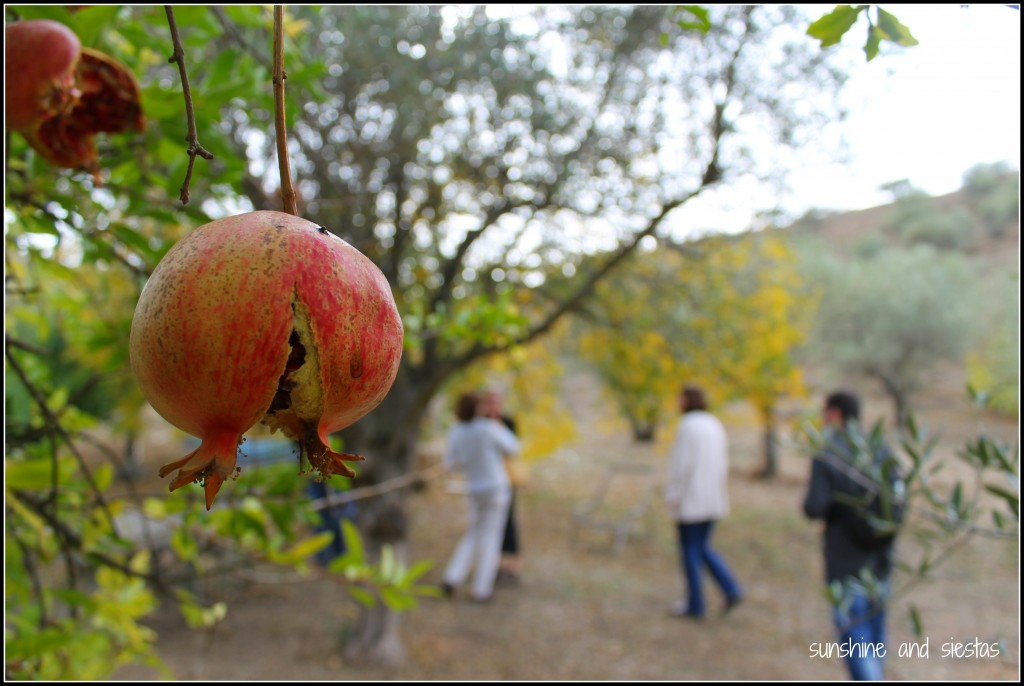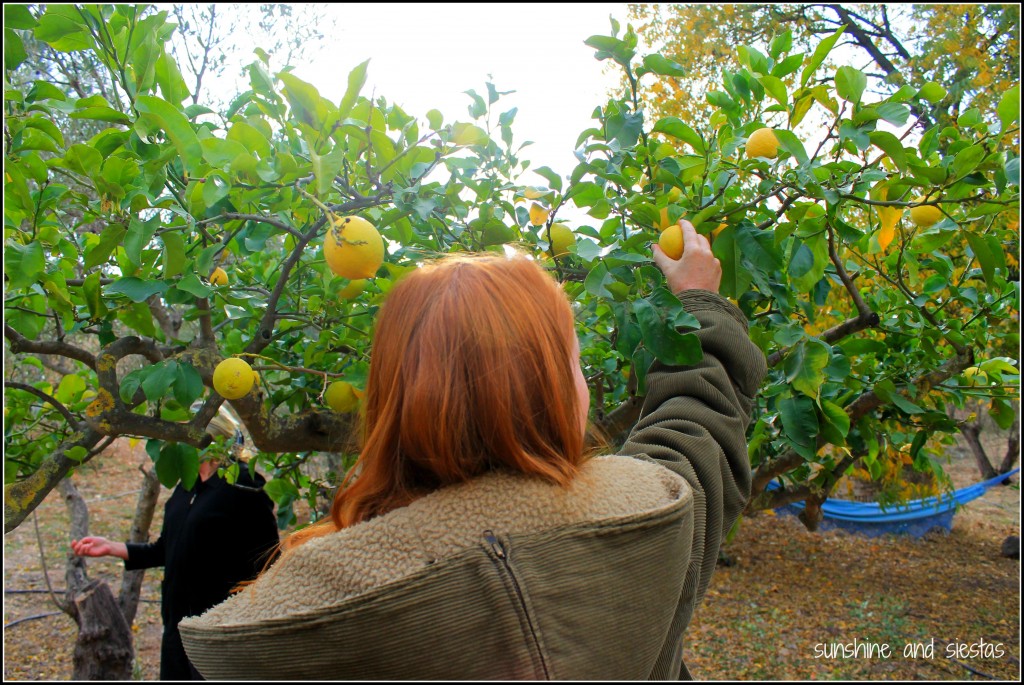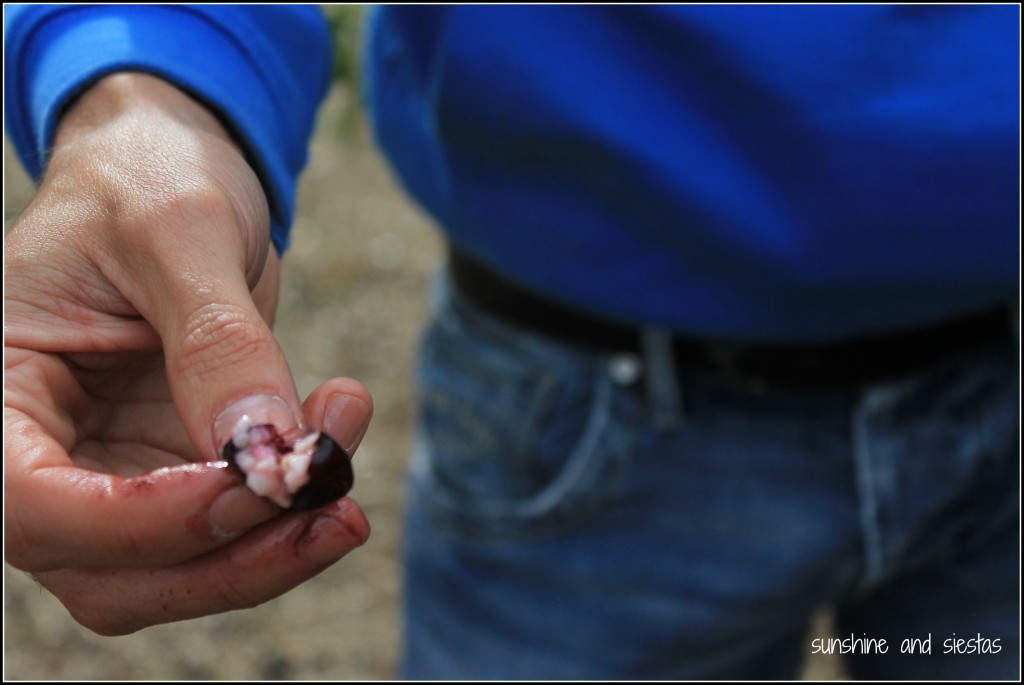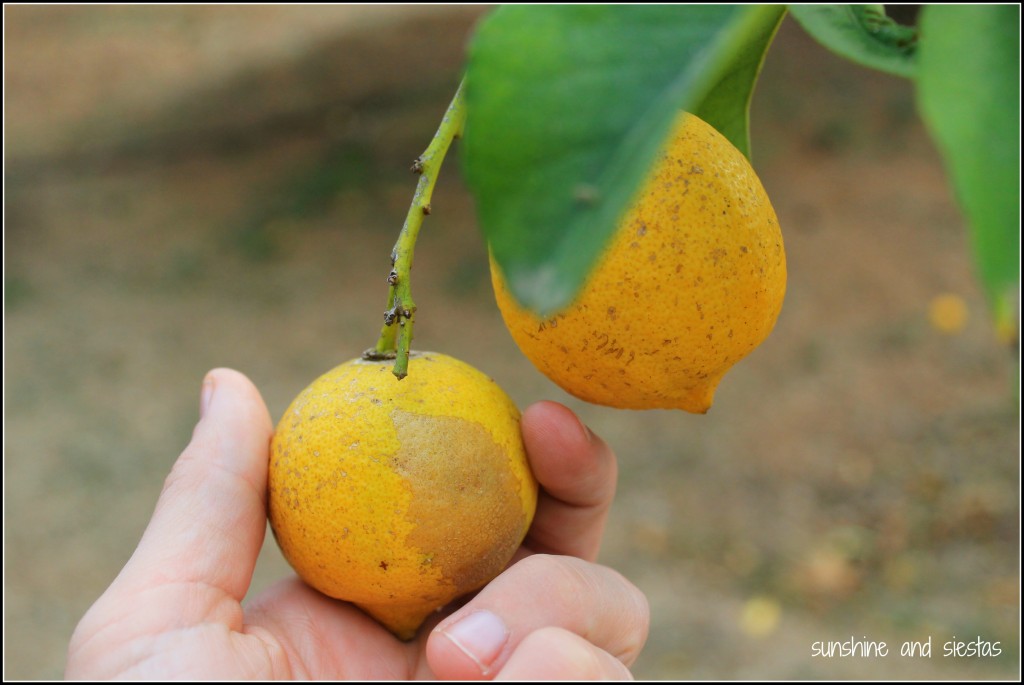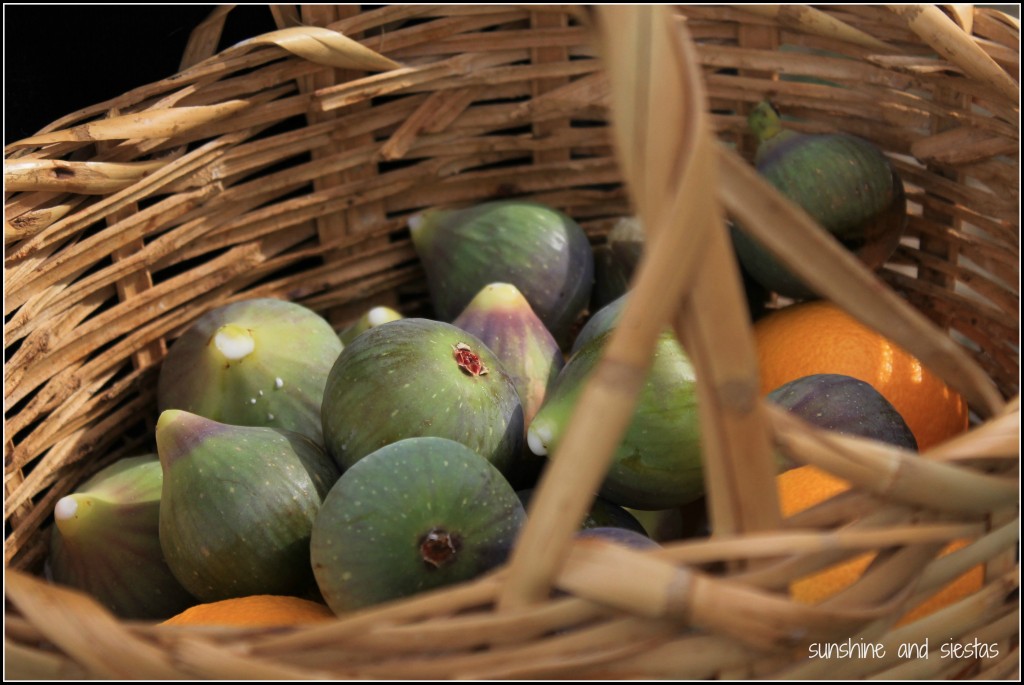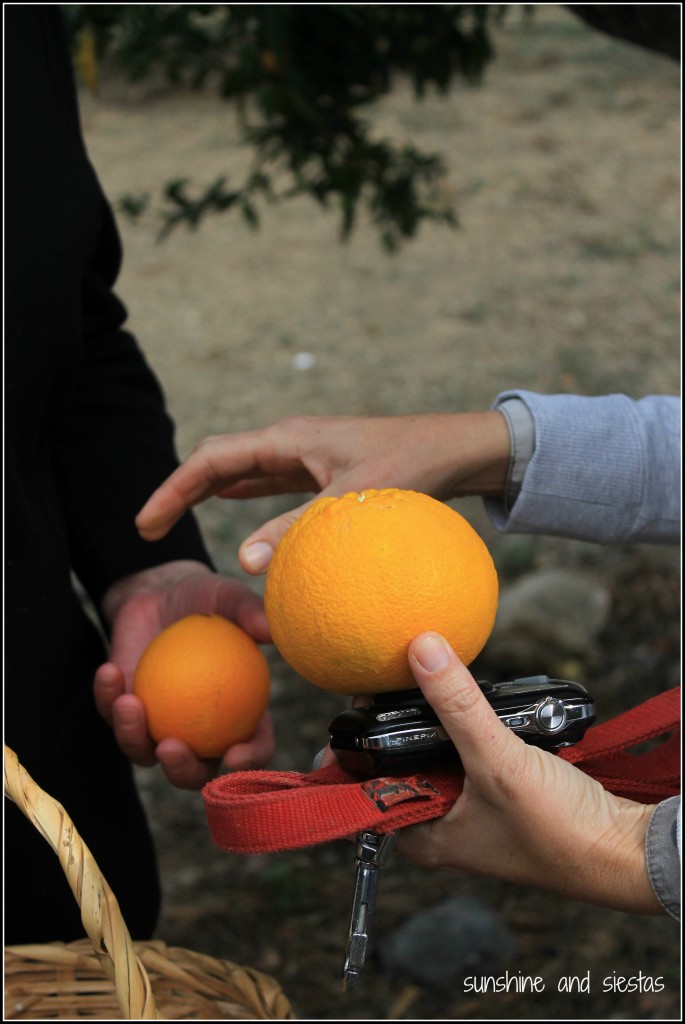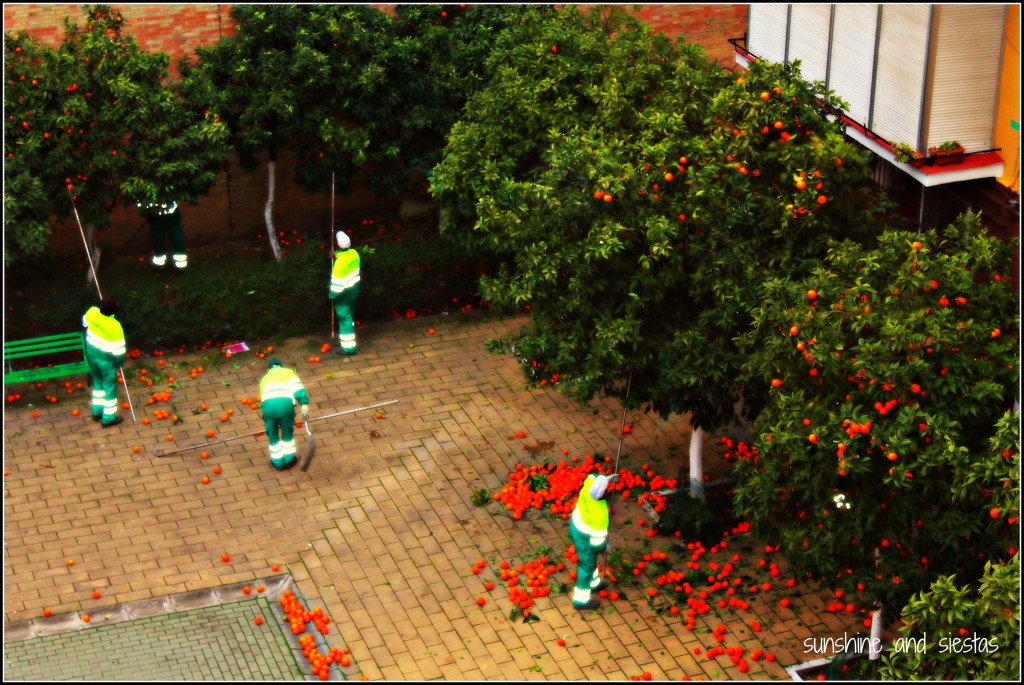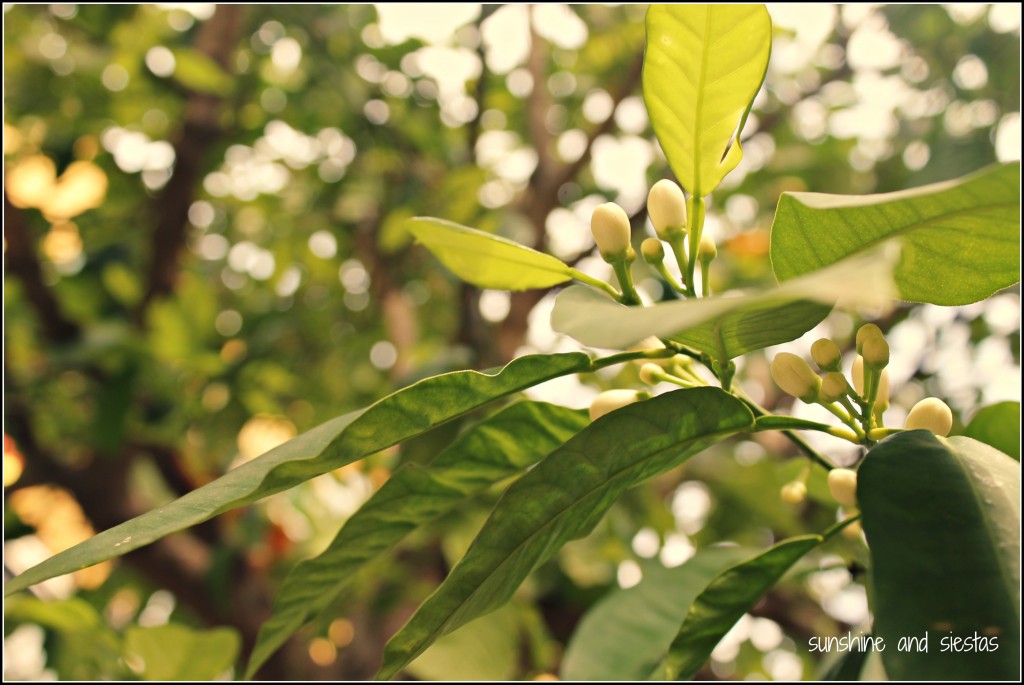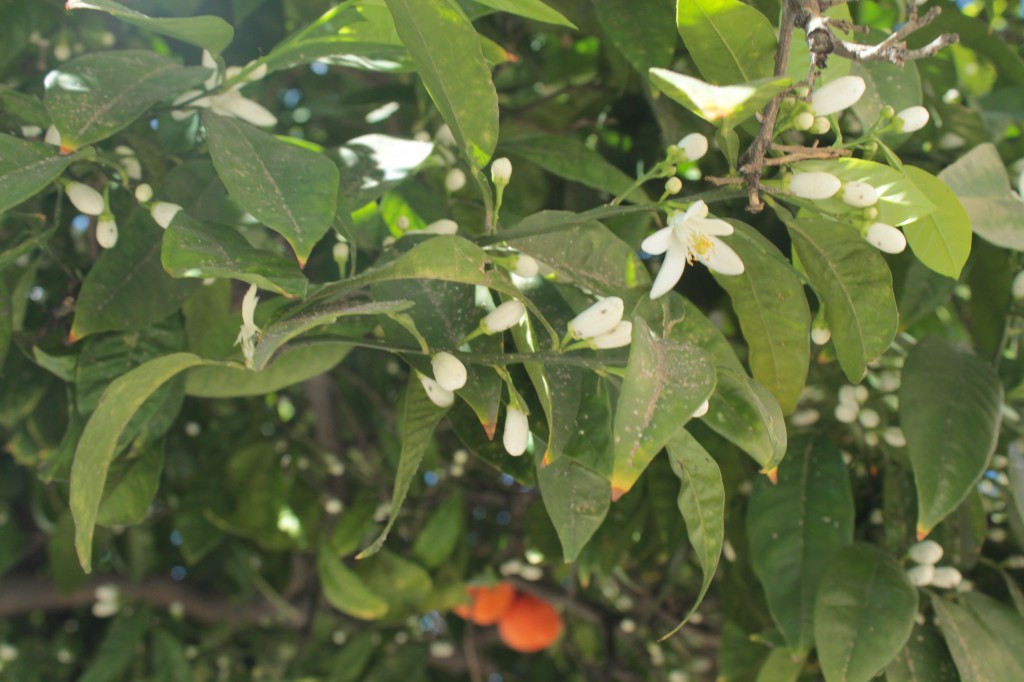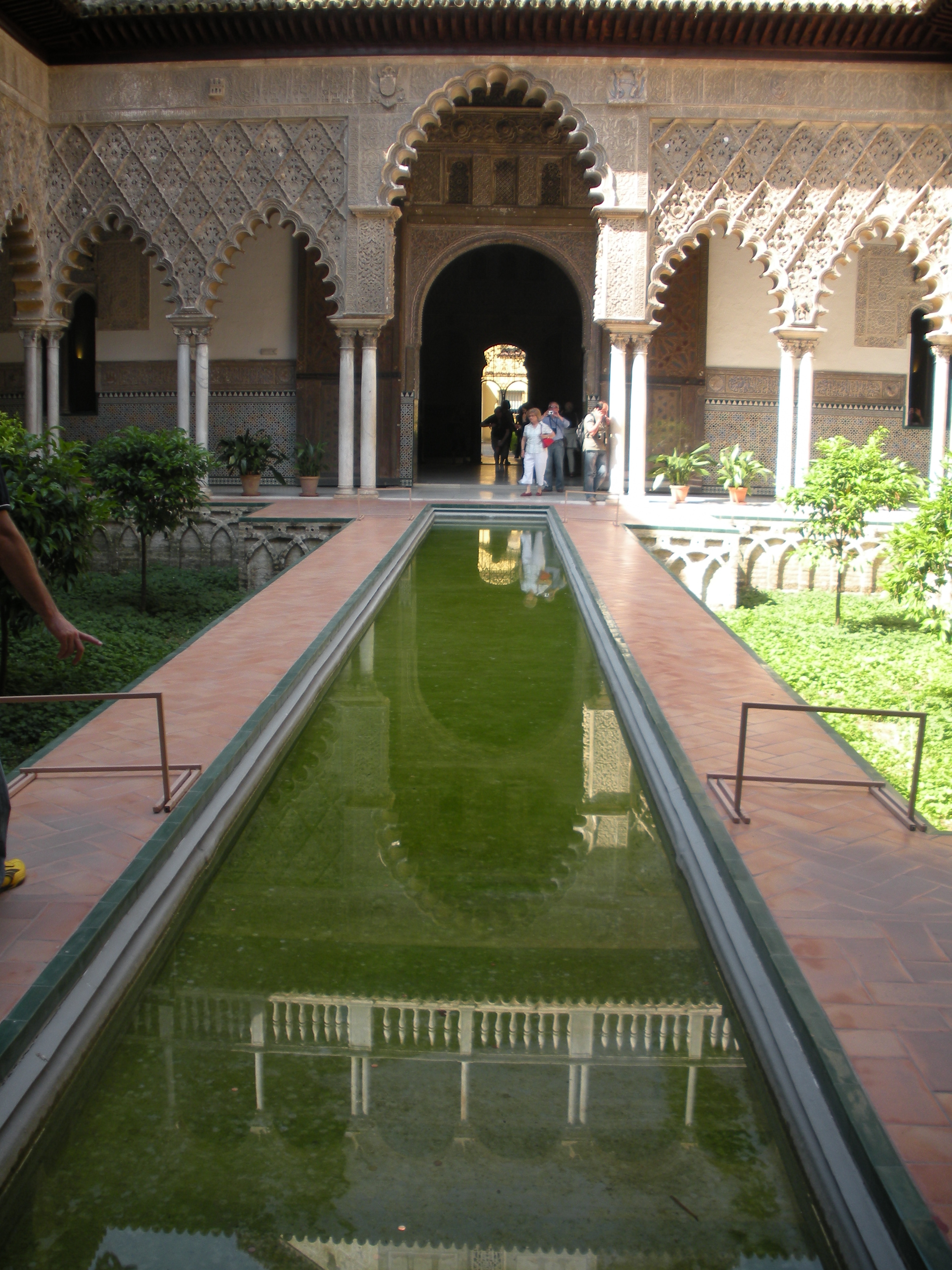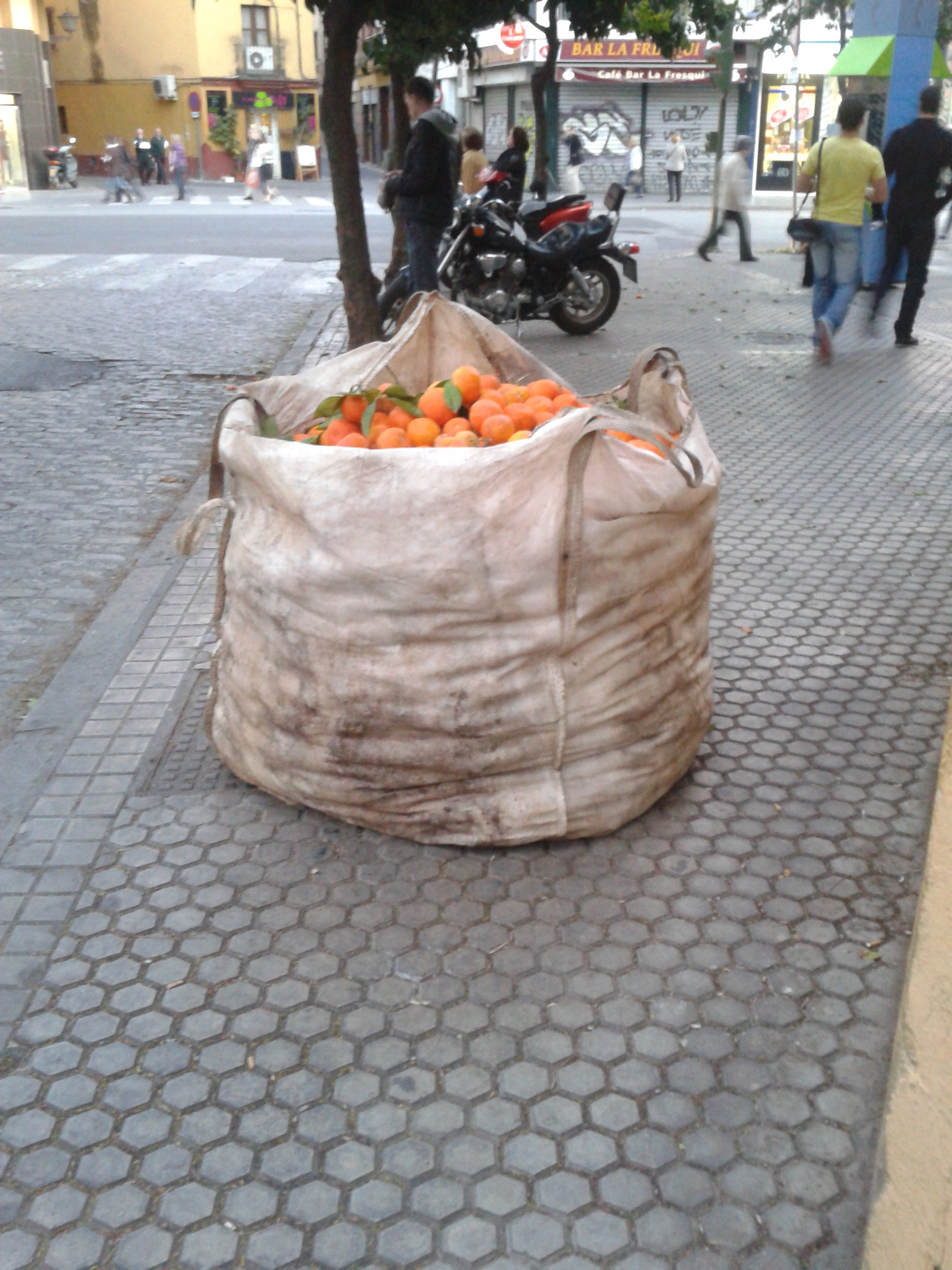Spain is a country that’s easy to get lost in. I don’t mean the culture or the romanticism – I mean, GPS systems are absolute crap, and it’s easier to end up on the wrong road than it is to arrive to your destination calmly and on time.
Stuck in our constant chatter, Mickey and I missed our exit, had a local forget we were following him to Almogía, and ended up on a dirt road. I called Mayte, one of the women behind A Cooking Day, and she told me she hadn’t heard of the town we’d just driven through.
“There will be wine,” Mickey soothed. “There is always wine on a Spanish table. Don’t stress.”
As it turned out, we were in Mayte’s driveway, but wouldn’t find that out before turning around again. But Mickey was right – as soon as we’d sat down in the airy courtyard of her country house, dripping with Bougainvillea and antique lanterns, I felt at ease and over my road rage.
Mayte and Keti announced the menu before anyone had been introduced – ajoblanco, a citrus salad with cod and spring onions, fideuà and quince pastries, plus homemade bread. As with any Spanish weekend meal, we’d snack our way through the process, eating olives they’d marinated and malagueño cheese with homemade fig marmalade.
Prepping our meal
After meeting fellow blogger Robin Graham and his partner, as well as locals Ute and Sergio, wicker baskets were distributed and we went into the small huerto to pick fruit. Oranges, persimmons, figs and lemons are ripe at this time of year, and we’d be using several in our recipes.
Once back in the house, we donned aprons. Robin and I set to peeling shrimp while Mickey and Sergio pounded almonds using an iron mallet and a stone, a traditional method. As an American used to my fish coming headless and my chicken breasts cleaned, it was refreshing to know that we were truly making farm to fork food.
Mayte’s kitchen is spacious and modern, blended seamlessly into a century-old farmhouse that’s full of interesting pieces from her travels around the world. She and Keti, a longtime friend, set up the cooking classes in both English and Spanish earlier this year. They cater groups of two to just six, ensuring that everyone will get their hands dirty.
There would be blanching, chopping and stirring, but not without a glass of Rioja and a few stolen almonds.
Making our Food
First up? Kneading the bread and preparing it to rise. Mine refused to cooperate with me, and coupled with my lack of kitchen skills, I was toast. Ha. The day was a bit damp, causing the bread to need more time to bake and rise. I took another sip of beer.
We focused on the ajoblanco next, peeling away the case and chopping garlic – it was a dish I’d surprisingly not tried before. Mayte dumped everything into the blender and turned it on, and we were sipping it a short time later between nibbles of our baked bread and organic olive oil (Mayte’s recipe is below).
As we peeled the oranges we picked and chopped them, along with the ripe spring onions, the shrimp shells we’d discarded and the monkfish boiled in separate pots to serve as brother for the fideuà noodle dish that would be our main plato.
Keti showed us a family secret – frying the noodles with a bit of oil and garlic so that they’d not get too hard later. As a last-minute addition, we made a simple alioli sauce of egg whites, garlic and olive oil to accompany this traditional noodle dish that resembles paella.
La sobremesa
Nearing 4 o’clock, we sat down to eat. The fireplace crackled as Mayte served us the salad. While I didn’t think I’d be too keen on mixing salted cod with oranges and onions, the malagueña salad was surpassingly good and felt layered, despite its simplicity.
Our bellies were happy and in good company around the table. Sobremesa is a Spanish term that refers to the conversation and camaraderie that always seems to happen around a table. In fact, the work for striking up a conversation is entablar, which perfectly encompasses sobremesa chat. I chose to bring Mickey because I knew she’d be right at home. Like me, she loves wine, food and good conversation.
As Keti finished the fideuà, we drank up, a rich Rioja that blended well with all of the flavors on the table. The noodles were cooked perfectly, creamy and with the right amount of flavor. Again, I was taken back at how flavorful something so simple could taste.
The Takeaway
For someone who loves food and dabbles in cooking, the outing was a fun was to spend a day. We rolled up our sleeves and got to see the process through, from picking the fresh fruit to taking the quince pastries out of the oven. Perhaps by my own election and in the name of art (and Camarón), I didn’t cook as much as I expected.
Mayte and Keti are personable, helpful and patient, and they make great company. I appreciated that they came up with a menu that pleased palates from five different countries and our two vegetarian counterparts, and the food was simple enough to repeat, yet filling and delicious.
[yumprint-recipe id=’1′] Mickey and I were gracious guests of Mayte and Keti of A Cooking Day, but all opinions belong to me. A Cooking Day is available to speakers of English, Spanish or French for 50€ a head, which includes the materials, food and drink, plus company. Mayte’s cortijo is located just off the A-7, right outside of Málaga. For more information, consult their website.
